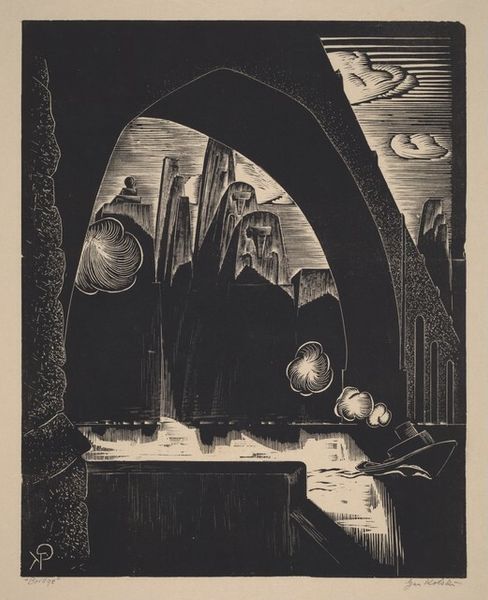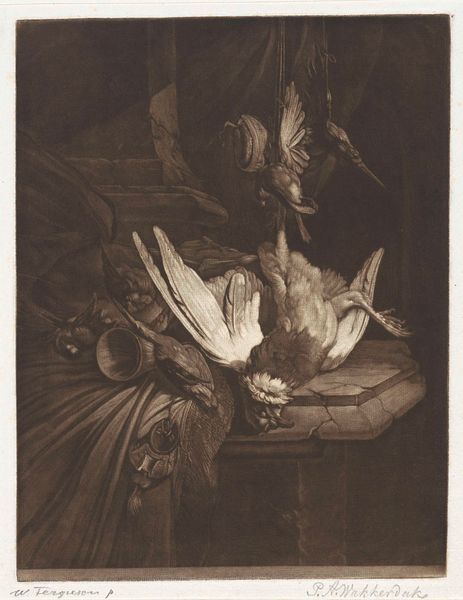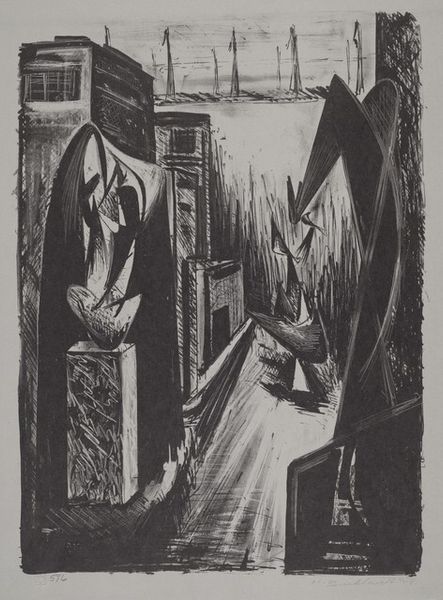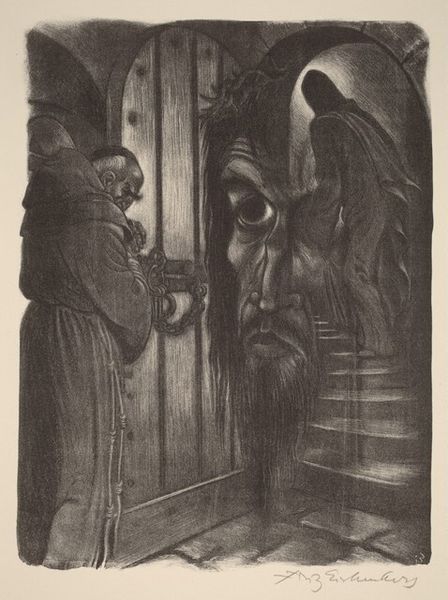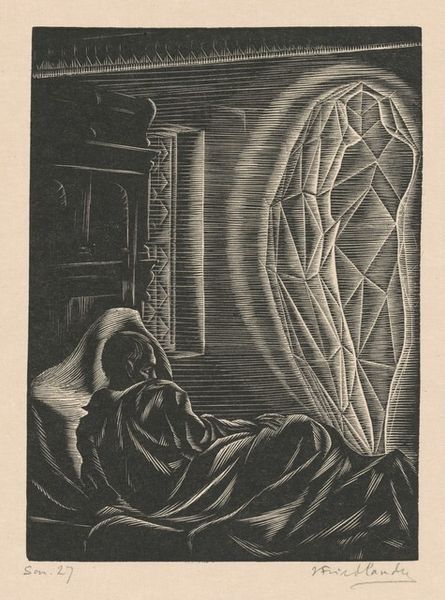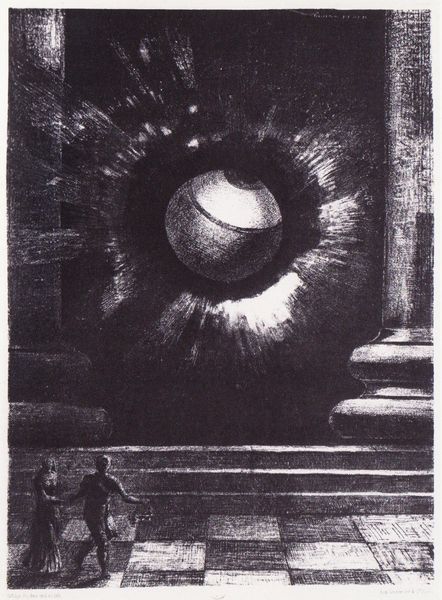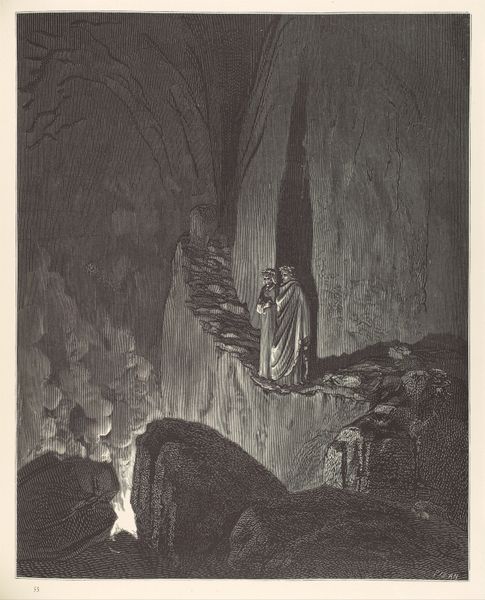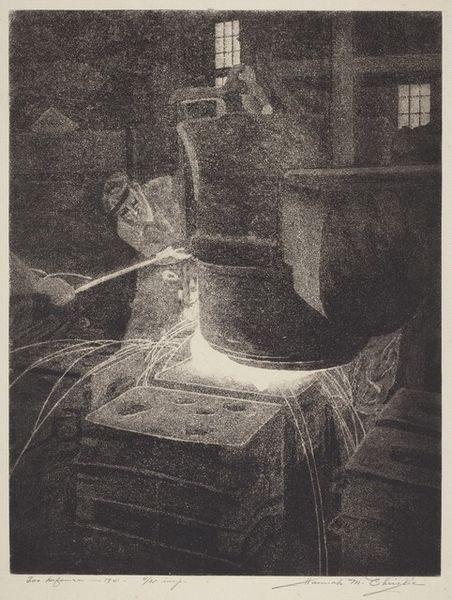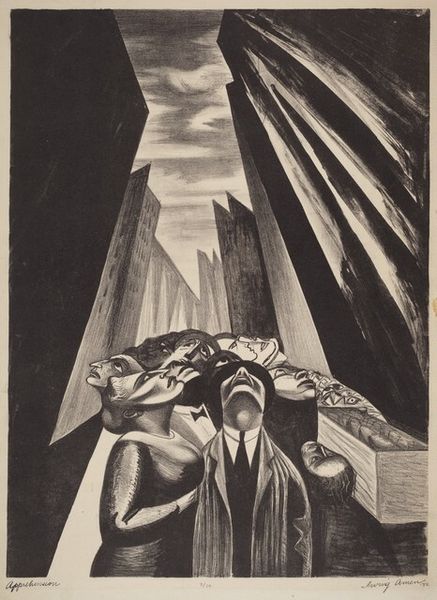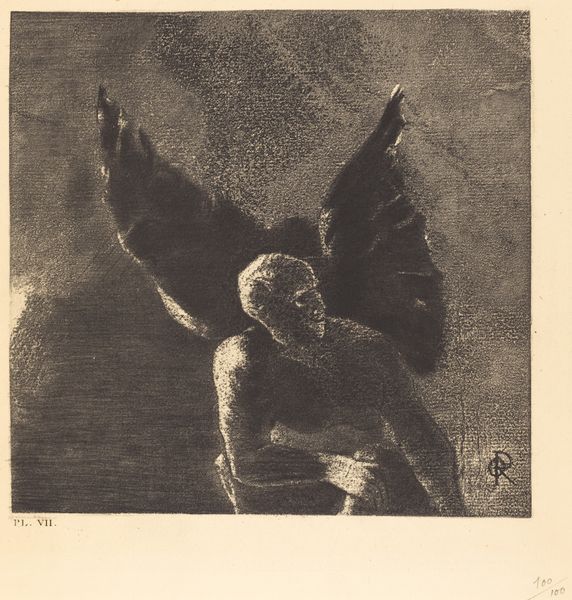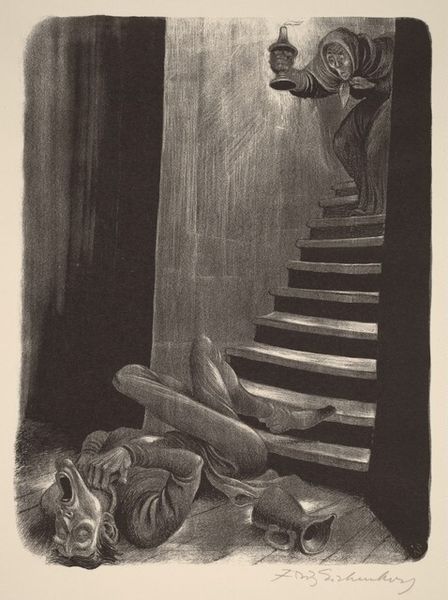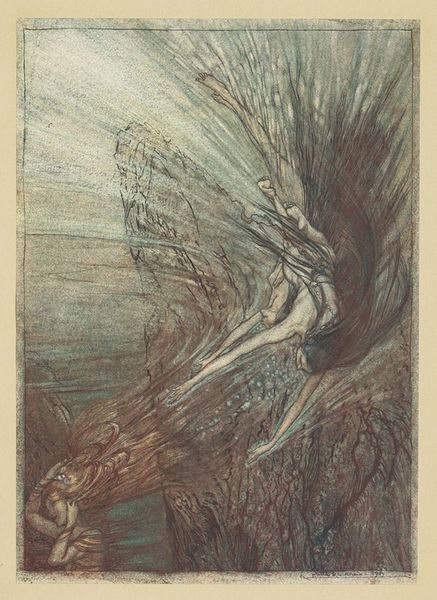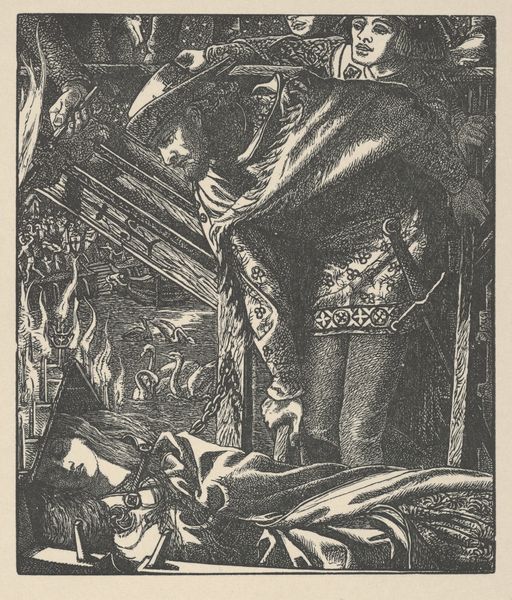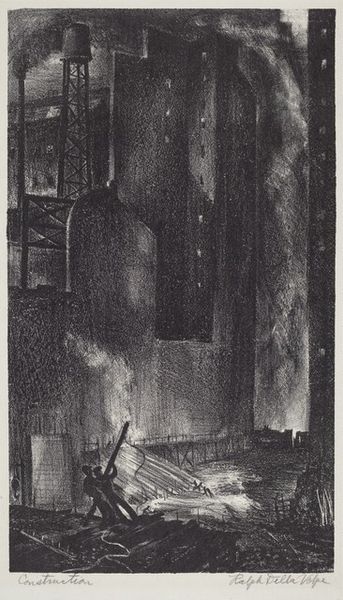
graphic-art, print
#
graphic-art
#
narrative-art
# print
#
realism
Dimensions: image: 36.5 × 23 cm (14 3/8 × 9 1/16 in.) sheet: 43.8 × 32.4 cm (17 1/4 × 12 3/4 in.)
Copyright: National Gallery of Art: CC0 1.0
Editor: So, here we have James E. Allen’s “Men and Iron I” from 1935, a print that depicts workers and what appears to be a steel mill. It’s incredibly textured, and the sharp lines give a real sense of grit and industry. What do you see when you look at this work? Curator: I see an ode to the means of production. Allen is documenting not just the laborers, but the sheer force and materiality involved in industrial processes. Consider the stark contrast – the relatively small human figures against the immense, overpowering iron machinery. He’s highlighting the scale of human labor dwarfed by its own creations. Editor: Right! It almost feels overwhelming. Like the workers are consumed by this industrial process. Curator: Exactly. And how is this imagery itself produced? Allen chose printmaking, a medium that allows for mass production and distribution. So, even the medium is speaking to themes of labor, replication, and the social reach of art. Are there any textures or visual elements that particularly grab your attention? Editor: I'm struck by the light, almost like molten sparks flying everywhere! And the huge U-shaped structure dominating the scene. Curator: The “sparks” are the result of Allen using, likely, engraving or drypoint – laborious processes to create this stark image. He uses his material means to communicate how industrial manufacturing reshapes people's lived realities, especially within work contexts. What do you think the role of “narrative-art” might play, then, here? Editor: Hmmm. I hadn’t thought of it as narrative initially, more like documentary… But you're right, it is a commentary on the worker's position and struggle. I didn't really think about that on my first pass through. Curator: And through understanding that materiality, we gain deeper insights into Allen’s own process, intention, and what "Men and Iron I" communicated within the social climate of 1935. Editor: This has definitely broadened how I see prints! I’m going to look at prints much more closely now in terms of how they were actually made.
Comments
No comments
Be the first to comment and join the conversation on the ultimate creative platform.
